
Glasgow’s parks and the evolution of the bandstand
Before the Park
The Kelvingrove Bandstand exists because the Kelvingrove Park exists. It’s 171 years old this year, but what was here before the park?
Before the 1850s this area was a collection of small country houses surrounded by gardens, woods, fields and farmland.
The heart of the park we know today was the old Kelvingrove House, which was located on the banks of the river near to where the skateboard park is today.
Just to the south was Kelvinbank House, and on the hills overlooking the river valley was Gilmorehill House (where the University stands today) and Woodlands House (where Park Circus is).

1782 | Kelvingrove House
'Kelvingrove House was built by Mr. Patrick Colquhoun in 1782, The grounds extended to about 12 acres, and were enclosed by a wall, and laid out as pleasure grounds, with extensive gardens and other accessories to a gentleman’s country house. Kelvingrove was more than one mile from the most westmost part of the city, and was justly considered one of the most beautiful country residences around Glasgow…'
Duncan McLellan, Superintendent of Parks, 1894
Images from the archives

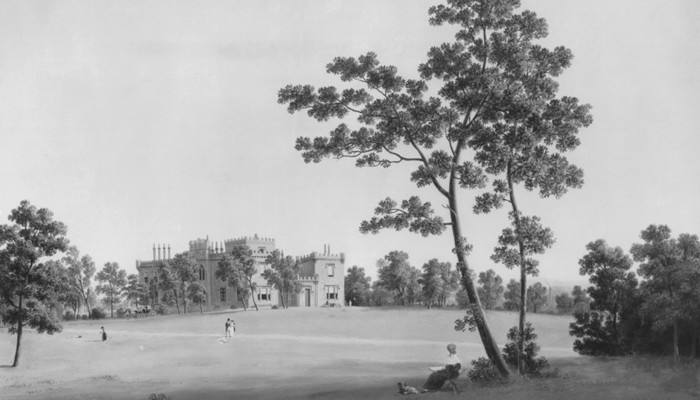

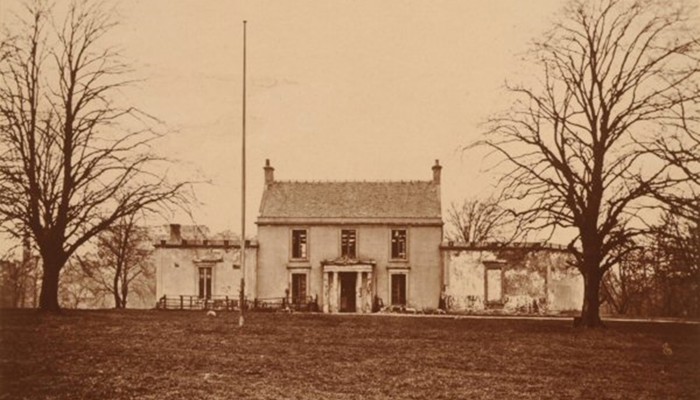
1852 | Kelvingrove Park
The idea to develop a public park at Kelvingrove and Woodlands was first raised in 1850. The two houses were lying empty even though they were less than 60 years old.
In 1852, the Council bought both properties and immediately started laying out the grounds around Kelvingrove House as a park. At the same time they started developing Woodlands Hill for luxury housing.
The master plan for the park was drawn up by the local architect Charles Wilson who also designed the new housing on Woodlands Hill. Joseph Paxton, the designer of the Crystal Palace in London, contributed his own scheme in 1854 but it’s not clear how much of it was used.
When the park was first opened to the public in 1853 it was still basically the grounds of a large Georgian country house. The main addition was a new network of paths that had been laid out to allow the public to walk and drive their carriages through the lawns, trees and gardens.
Park Designs
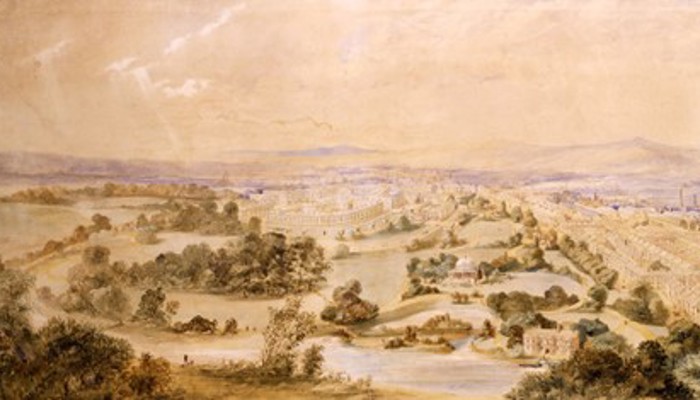
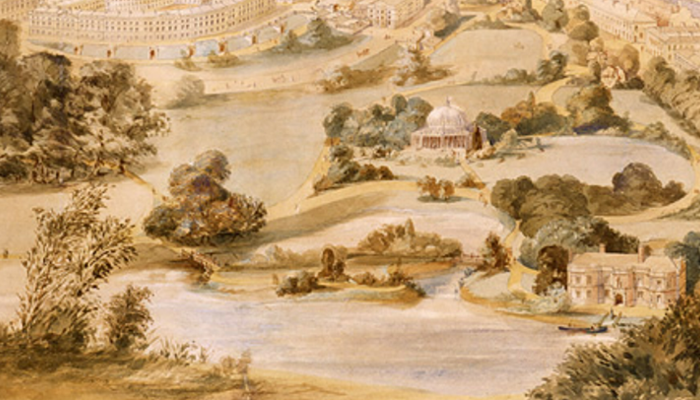
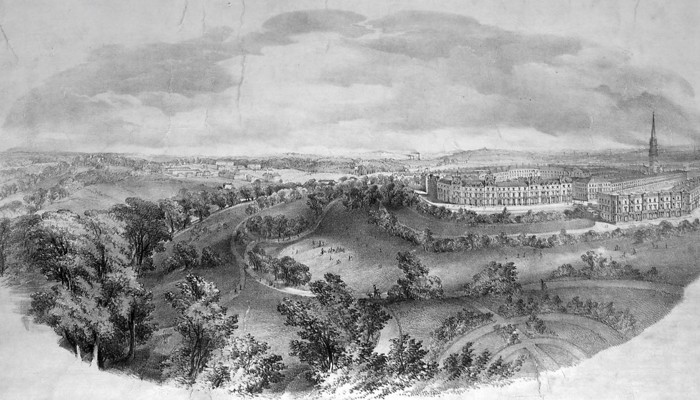
1868 | The park expands
The original 1850s park only included the lands of Kelvingrove house.
The first major addition to this came in the 1860s and was a direct result of the University of Glasgow purchasing the estate of Gilmorehill in 1864, so that they could move from their ancient site on the High Street. While the new university buildings were being constructed on top of the hill, the Council took the land down beside the river and redesigned it as the first extension to the park. This was completed by 1868 along with a new wooden bridge that connected the two sections. It was in this new area that the bandstand would be built half a century later.
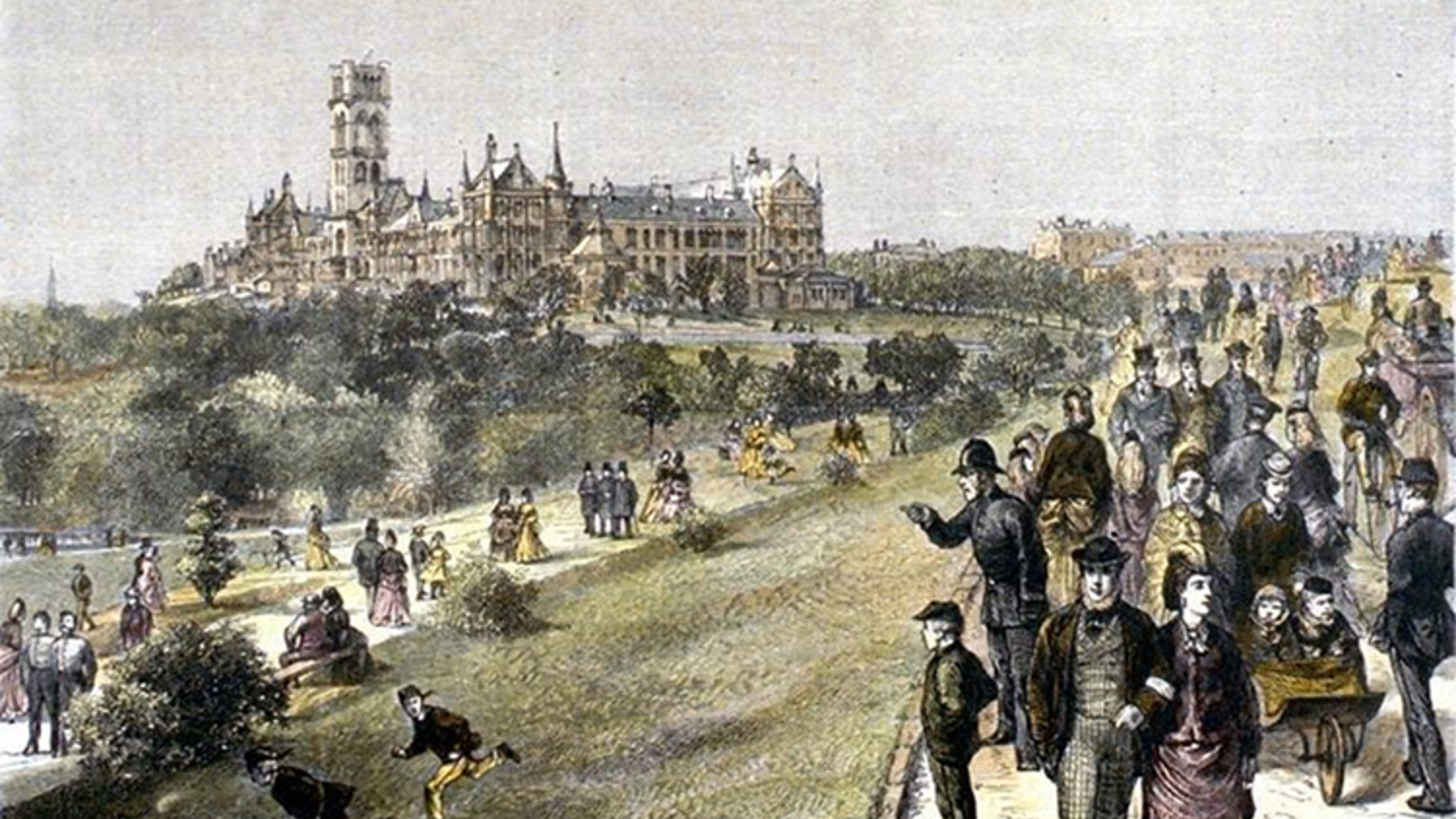
1872 | Music in the park
For the first two decades, Kelvingrove Park was simply a place to walk, rest and enjoy the beauties of nature. As one of the greatest industrial cities in the world, Glasgow was a noisy, dirty place to live and Kelvingrove was one of the few green places that the citizens could escape from the factories and the smoke.
That all changed in 1872 when the Council decided that nature wasn’t enough and what the people and the park needed was the sound of music.
At 5 o’clock on Saturday 3rd August 1872, the very first band played at Kelvingrove Park. These pioneers were the band of the 25th Lanarkshire Rifle Volunteers, a well-known local military band. In that very first concert they played a selection of popular classical and Scottish pieces which most of the crowd would have been very familiar with. It must have been a success because it started the tradition of live music in the park which is still going today, over 150 years and many thousands of musicians later!
The first band
The 25th Lanarkshire Rifle Volunteers were local lads, so people in the area would have known them personally and individually. All of the men who volunteered to join the 25th were recruited from the many shipbuilding and engineering companies in the city so they earned the nickname, the ‘Clyde Artisans’.
They had been formed in 1860, just one of the hundreds of volunteer corps that were set up throughout Britain at that time because of the fear of a military invasion.
The battalion was based in Kelvinbank House which at that time stood where the tennis courts are today, so it would only have been have a short march to the park for the band to play in the park that Saturday.
Being a military band, they were dressed in a uniform of rifle green jackets, trousers with scarlet cuffs, collars, and piping (second from the left in the image below).
The 25th Lanarkshire Rifle Volunteers
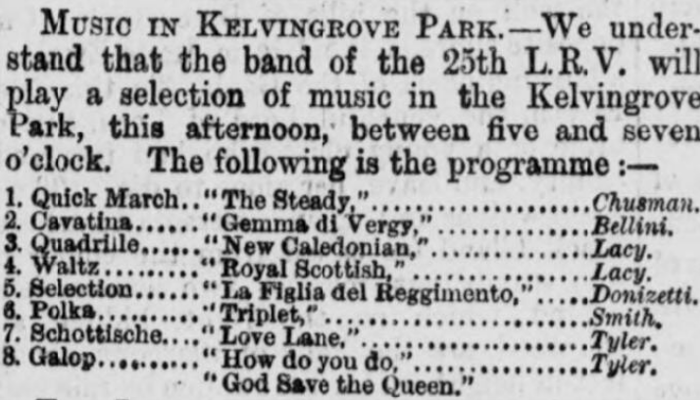

Rational Entertainment
This was the Victorian era, so the concerts in the parks weren’t put on just for fun and entertainment. They were also meant to be educational and – most importantly - morally uplifting!
Apart from the fear of invasion, many people in positions of power also feared that the busy and chaotic life in the rapidly expanding industrial cities was leading the working man and woman away from a moral and upright life and into idle and sinful ways, especially during their leisure time.
Their answer to this was to provide what was called ‘rational entertainment’ that would improve the body, the mind and the character, particularly of the working classes. So, they founded parks where people could promenade and improve their physical fitness, libraries, museums and galleries where they could improve their minds, and put on musical events where their artistic souls could be elevated.
Music in the Parks Programme

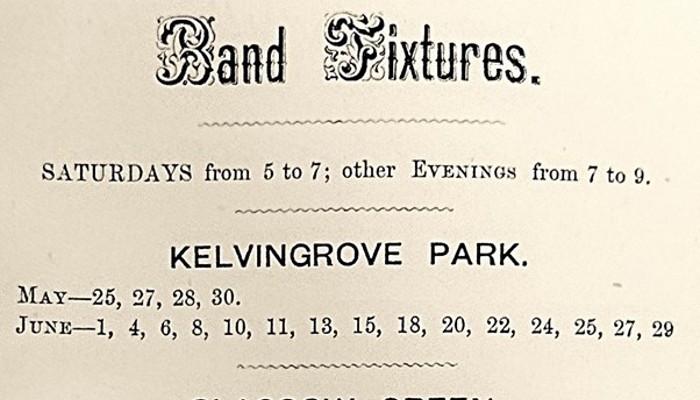
Next
-
Designing and building this iconic venue
Find out more about the bandstand design

